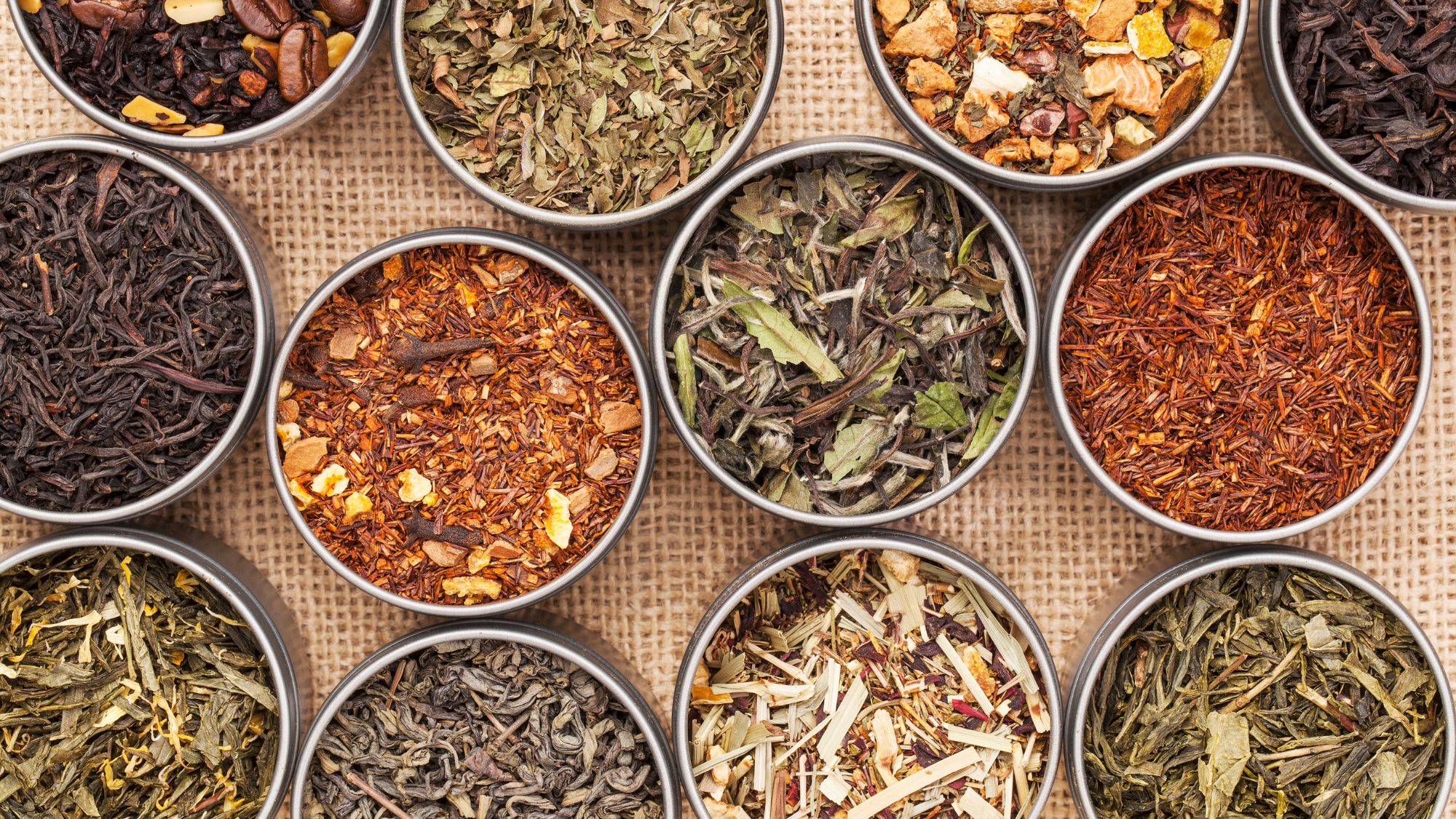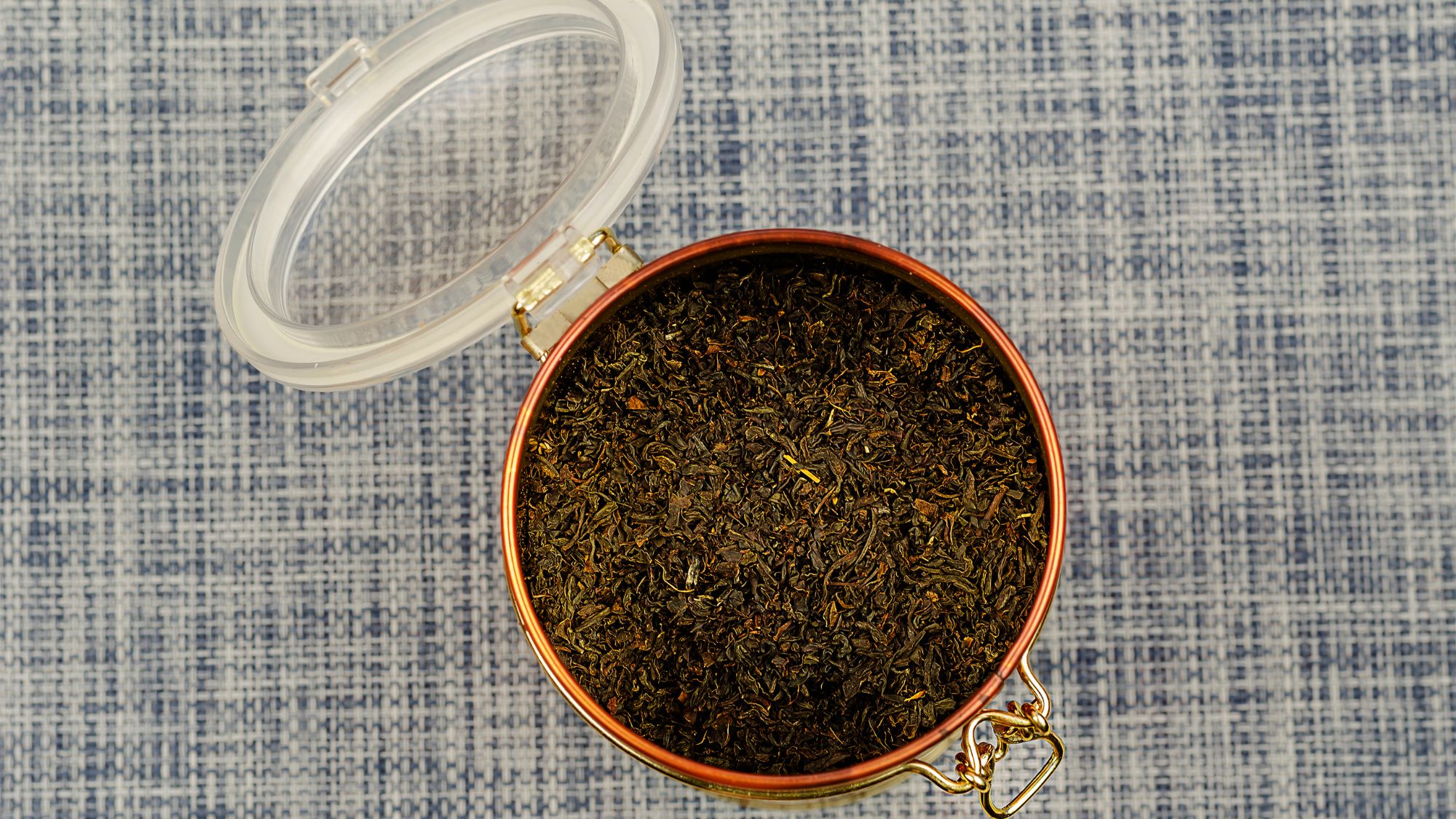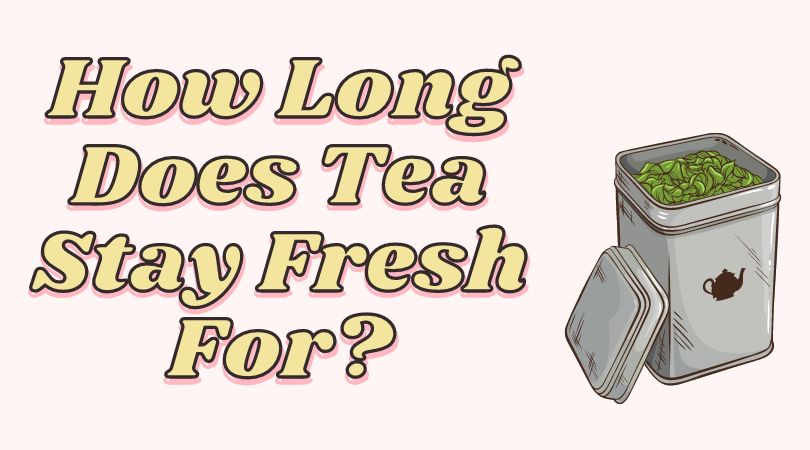How long does tea stay fresh for? That is one of the questions that I am asked the most. Unlike a lot of the other foods and drinks in our kitchens, tea is often packaged (and repackaged) without a marked expiration date. There also aren’t really firm rules like you might find with something more perishable. In this post, I’ll do my best to address those concerns and put you on the path to tea storage success.
Does Tea Go Bad?
As long as it’s stored correctly, tea doesn’t truly go bad or expire. The leaves will simply lose flavor over time. You can safely drink tea that is past its prime. It just won’t taste as good as it did when you first purchased it. The main exception to that is that moisture being introduced to the leaves can cause them to mold. In that case, it is better to be safe than sorry. Dispose of the leaves and the container they were in.
A lot of tea companies today use a Ziploc-style bag. These are ok but can fail so I recommend keeping a close eye on any tea you have in this type of packaging. Avoid paper bags with plastic windows because these leave your tea exposed to both air and light.
The best way to tell if tea is still good is to rely on your senses. Smell the leaves to check for any offputting odors. Metallic, mildewy, or chemical aromas are not a good sign and I would likely throw a tea with those smells out.
Types of Tea
There are six categories of tea and the way that each is processed affects how long the product will stay fresh. Tea with higher oxidation will generally last longer than those that are not oxidized.
- White tea is interesting because aging them has recently become popular in the last 20 years or so. That being said, not all white teas are good candidates for aging. Sun-dried white teas will age much like a sheng puerh. As time passes the tea will become darker and develop interesting medicinal flavors that many people enjoy. Leaves that have been dried using a more direct heat source will not age and are more likely to lose their flavor over time.
- Green tea has the shortest shelf life because it is not oxidized. The leaves retain a larger portion of their enzymes, making them more susceptible to environmental damage. Most green teas are best consumed within six months to a year after harvesting. Matcha, in particular, can go off very quickly since the leaves are ground into a powder which exposes more surface area to the air.
- Yellow tea does have some oxidation due to the piling process that is repeated several times before the final drying step. I find they don’t go bad quite as quickly as green tea for that reason. In my experience, Yunnan yellow teas tend to keep much longer than their greener cousins like Meng Ding and Huo Shan Huang Ya.
- Oolong is a wide-ranging category. Greener oolongs will generally not stay at their best as long as their more oxidized or heavily roasted counterparts. Some oolongs, such as those from the Wuyi mountains, require resting for up to a year due to the charcoal roasting that is part of their processing. Oolong intended for aging is usually re-roasted periodically to remove moisture from the leaves.
- Black tea is generally shelf stable because it is nearly fully oxidized. The first flush of Darjeeling is an exception to that rule as the leaves are still on the greener side. Black tea that is no longer good will have a cloudy, translucent appearance immediately after brewing. Compressed black teas are readily available for purchase, but these will not age in the same way that puerh does.
- Puerh is generally considered to have the most extended shelf life out of all the types of tea. Sheng puerh has the most potential for aging because oxidation is not stopped completely. The kill green step slows it to a snail’s pace, allowing the taste to gradually change over the years. Shou puerh is artificially fermented which breaks down the composition of the leaves, giving them less potential for change over time.

The Importance of Storage
How your tea is stored is the most significant determining factor in its shelf life. Exposure to air, heat, light, and moisture are all the enemies of tea. What that means is that tea is best kept in an opaque container with a well-sealed lid. When I worked at Teavana customers would often insist that they don’t need a tin to store their tea in. While add-on sales are a part of any retail interaction, in this case, they are the best way to maintain the freshness of your purchase. Paper bags with tin ties will not protect your tea from much of anything.
Your tea is exposed to air and moisture every time you open the container in which it is kept. While this is unavoidable, it can help to keep your tea in as small of a container as is needed, leaving less room for air inside. This may involve transferring as you go but it will extend the drinkable life of the leaves.
Glass jars might look pretty sitting out on your counter but both natural and artificial light will age your tea significantly faster. Heat will also rapidly steal strength and flavor from your tea. I know many people keep their tea in a cabinet over their refrigerator or stove but these areas are too hot to keep tea in most homes. If it is at all possible, designate a separate area to store your tea that will keep it safe from heat and any possible odor contamination.
Room temperature is the safest way to go unless you live in a place that has extreme variations in weather conditions. Some people do refrigerate their tea but condensation can be a concern as the leaves warm to room temperature. If you do opt to refrigerate your tea it is best to keep a designated minifridge for that sole purpose. Tea is very absorbent when it comes to odors and no one wants to drink a tea with hints of last night’s Chinese food dinner.
What to Do With Old Tea
Older tea can still be very useful. I like to use them for making iced tea because the flavor is rounder and they tend to be less sensitive to brew time and water temperature. Japanese green teas especially make for a nice cold brew. Baking is also another great way to use up your older tea. The leaves are more brittle which makes them easier to grind up into recipes. Tea is hygroscopic, meaning that readily absorbs moisture, so I will sometimes use old tea to make sachets to keep in my dresser drawers.
Flavored Teas
The trouble with flavored tea is that essential oils, dried fruits, and other ingredients are added to your tea. This can complicate things quite a bit because of the potential for introducing moisture. If the tea is not properly dried it can cause real problems for the consumer. Flavored teas are unlikely to stay fresh as long as a tea that has not been mixed or blended for this reason. Teas that contain citrus fruit can release gases, making it difficult to open the container in which they are kept. I recommend using a tin that has an inner plastic lid rather than the kind that snaps shut to avoid that happening.
I’d love to know your thoughts on how long tea stays fresh for. What do you do with your old tea? Leave me a comment below!
This post was originally published on May 14th, 2018. It was revised and updated on May 15th, 2023.

Help Support This Site

Support my work in tea by joining my Patreon community. For $2-$5 a month you’ll receive access to exclusive behind-the-scenes content, my private Discord server, surprise quarterly packages, and more!
